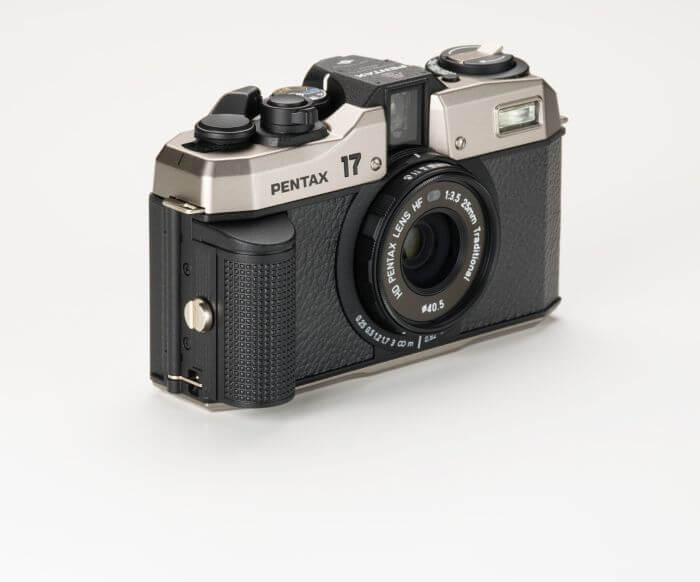
Film Photography Revival: 9 Reasons It’s Making a Resurgence
Share
Film Photography Revival: 12 Reasons It’s Making a Strong Resurgence in 2025
Curious About the Film Photography Comeback? FAQs Answered
-
Is film photography still relevant in 2025? Yes! It’s thriving with new films, cameras, and a passionate global community.
-
Are 35mm, 120, or large format films still made? Absolutely—Kodak, Ilford, and others are launching new stocks regularly.
-
Is this just a fleeting trend like Lomography? Nope, it’s a sustained movement, backed by rising sales and re-manufactured cameras.
-
Does Instax count as film photography? Not quite—it’s instant, while actual film involves a hands-on development process.
-
Where can I buy reliable film cameras? Check trusted sellers on eBay or Etsy for serviced models, or explore new ones like the Pentax 17.
New to film? Dive into our beginner’s guide: How to Get Started in Film Photography.
Film photography isn’t just hanging on—it’s roaring back to life. Vintage cameras like the Canon AE-1 or Nikon F3 are fetching prices higher than some pro digital SLRs, with eBay reporting 25-50% annual price spikes for sought-after models. Hobbyists are hooked, and pros are weaving film into premium offerings for weddings and portraits, delivering timeless results clients love.
Some call it nostalgia, like vinyl records before they outsold CDs in 2022. But the numbers don’t lie: film’s resurgence is real. Kodak’s 2024 sales surged 20% for film stocks, and manufacturers are doubling down. Kodak revived Ektachrome in 2017 and expanded Gold 200 to 120 format. CineStill launched 400D in 2022, followed by Ilford’s Kentmere 100/400 in 120. ORWO Wolfen debuted NC500 and NC400 color films, and Harman Photo dropped Phoenix 200 in 2023, upgrading to Version II in July 2025 based on photographer feedback. New cameras, like Leica’s reissued M6 ($5,900 body-only) and Pentax’s 2024 hit, the Pentax 17, signal industry confidence.
Online, the movement thrives: Reddit’s r/analog boasts 1.5 million members, and YouTube channels like Negative Feedback (500K+ subscribers) fuel enthusiasm with tutorials. This isn’t a fad—it’s a global revival with staying power.
What Is Film Photography?
Film photography uses analog cameras with light-sensitive film (35mm, 120 medium format, or 4x5 large format). You expose the film to light, then develop it chemically to create negatives or slides, which can be printed in a darkroom or scanned digitally. Unlike digital’s instant previews, film demands patience and skill. Instant formats like Instax differ due to their self-developing nature—here, we focus on the classic film process.
EXAMPLES OF FILM PHOTOGRAPHY
12 Reasons Film Photography Is Making a Comeback
From its soulful aesthetic to cultural shifts, here’s why film is captivating photographers in 2025:
1. Authenticity and Credibility
2. Richer Image Quality
3. Unmatched Aesthetic Appeal
4. Therapeutic and Mindful
5. Handmade Prints
6. Simpler Than Ever
7. Longevity and Cost-Effectiveness
8. Exclusivity for Special Moments
-
Film’s premium feel suits weddings and events, where pros charge extra for its heirloom quality.
-
Clients value the unique, tangible results, setting film apart from standard digital packages.
9. Authentic Portraits
10. Nostalgia and Vintage Vibes
11. Thriving Online Communities
12. Escape from Digital Fatigue
Addressing the Doubters: Is Film Really Worth It?
Hybrid Workflows: The Best of Both Worlds
Blend film’s magic with digital’s ease:
Try AI-assisted scanning tools (new in 2025) for sharper, faster results.
Buying Tips: Start Smart
-
Start Affordable: Try reloaded disposables or entry-level 35mm cameras (e.g., Canon Rebel, ~$100).
-
Stock Up: Explore new films like Harman Phoenix 200 or classics like Kodak Portra.
Join the Film Revival!











16 comments
Having a vintage camera cleaned and/repaired is easier said than done.
I found a Nikkormat FT3 that was in real good condition, all it needed was a cleaning(the focusing screen had some kind of black material on it around the edges. I took it to a camera repair shop but they refused to even look at it because they said they would be unable to find parts for it. I asked that they just clean it but still they refused. for the same reason. They would be unable to find a focusing screen for it. Its now part of my collection but I would have really liked to put a roll of film through it.
The author is correct stressing the unique look of film. But it seems some people are unable to see the qualitative differences of film to digital, as is obvious from their comments they even deny these qualities exist. Theirs is a useless exercise, they will never be artists.
As an old guy, it’s somewhat shocking to read an article about film cameras that includes the words “once upon a time…” Seriously, though, as a life-long camera collector and photographer who was slow to fully accept the transformation from film to digital, I can’t see why anyone would want to deal with the process and cost of shooting film now that digital is mainstream. Vinyl records regained popularity due to some strong aesthetic benefits they give the listener. But, I’m hard-pressed to see any benefit in shooting film vs. digital, especially considering the cost of film, processing, etc. I do still have a closet full of film Nikons and Pentaxes, but never shoot with any of them.
I’ve heard it before but really how many film photos have survived to this day? People throw away negatives because they don’t know what to do with them and photos get lost or damaged. Even if only 1% of digital photos survive from the number of photos taken I think it will be more than film photos. Really with proper backup, cloud storage, and the internet never forgetting there’s no reason for good photos to ever get lost. If you really want longevity then laser print your photos or if you’re nostalgic store them on CDs. Even if it gets damaged in fire it’s still theoretically possible to retrieve data from undamaged parts.
Except for perhaps technicolor there’s probably not a single film effect that can’t be achieved with digital and you can experiment more to get the desired effect. I don’t think any of the arguments hold any water. Photography, whether it’s digital or film, only gives you an approximation of the world and there’s never any correct photo so one thing I’ve learned it that there’s never a “better” photo and only one you like or don’t like.
Film, digital, it doesn’t matter. It is like painting with oil or acrylic paint, they are different mediums that produce the same end result. An artist will use that medium to create art not compare them against each other. On the other hand tech types, engineers and non artistic people are caught up in specs, numbers etc. I grew up with film and now take photos with a Ricoh GR3. To me it is just the same as shooting with film, the end result is a print. Neither is better than the other. Stop with this nonsense.